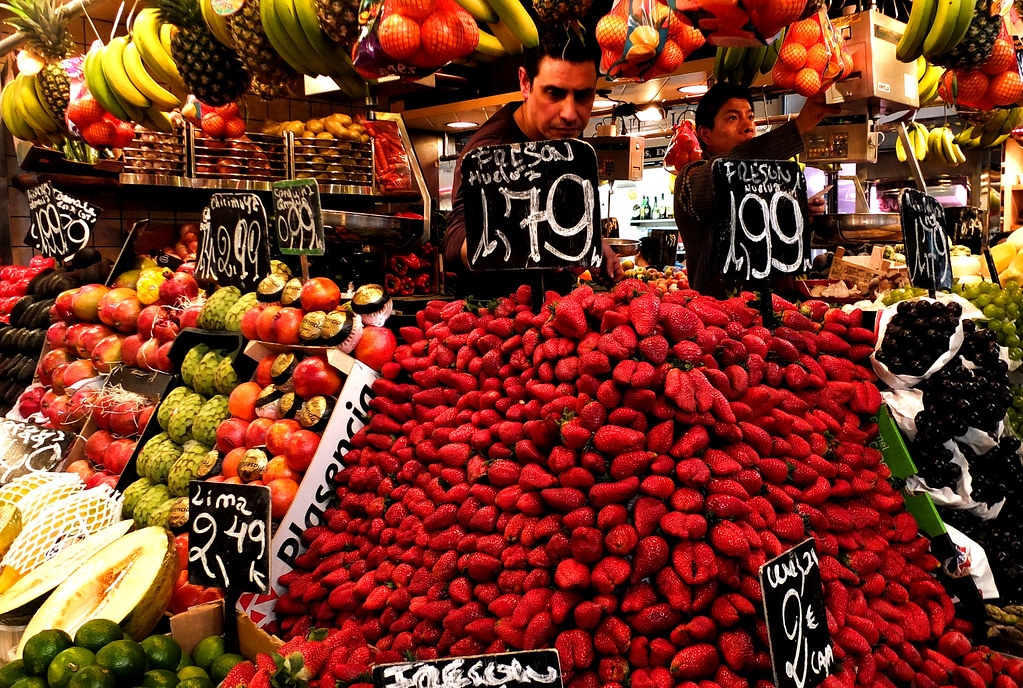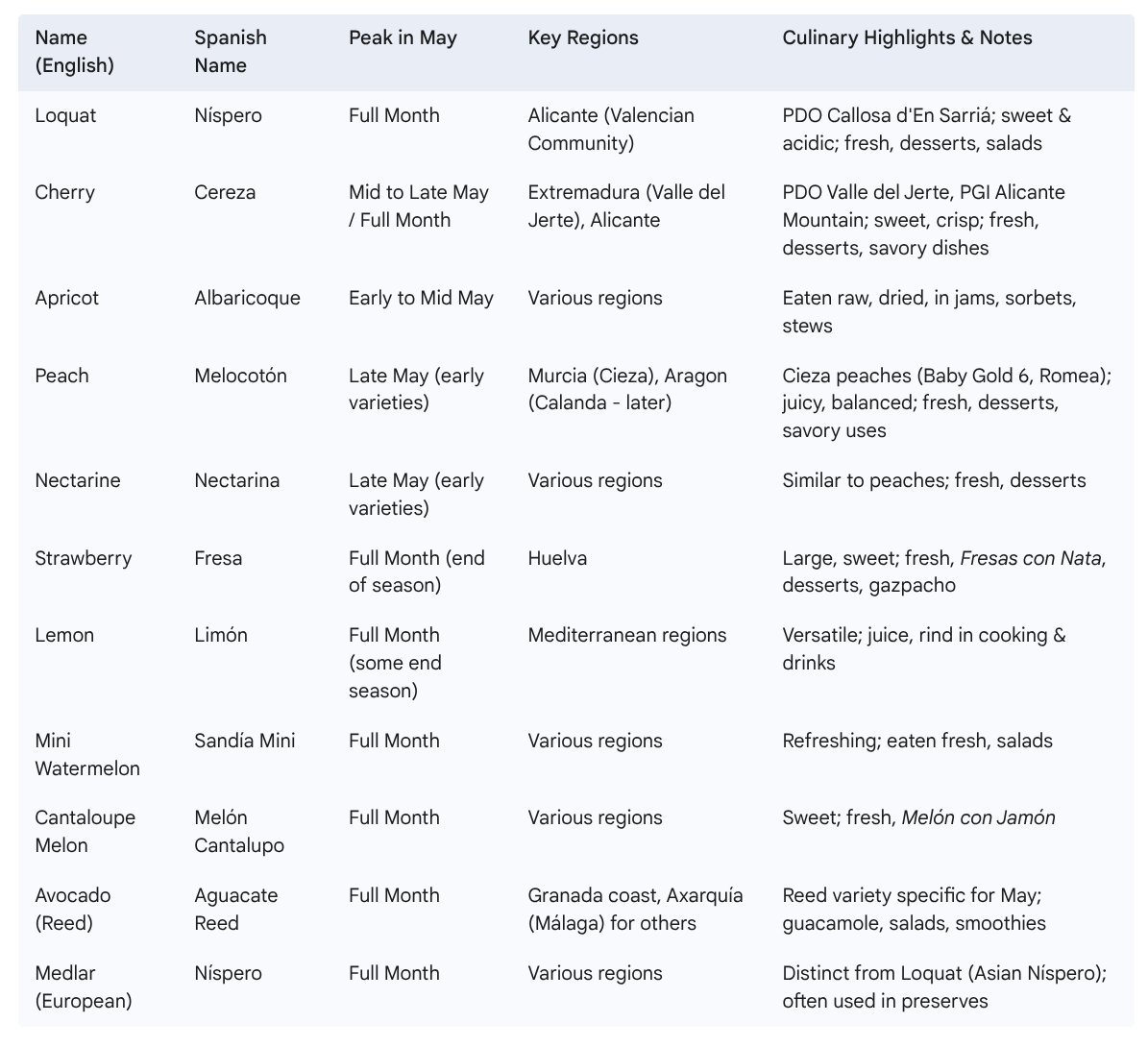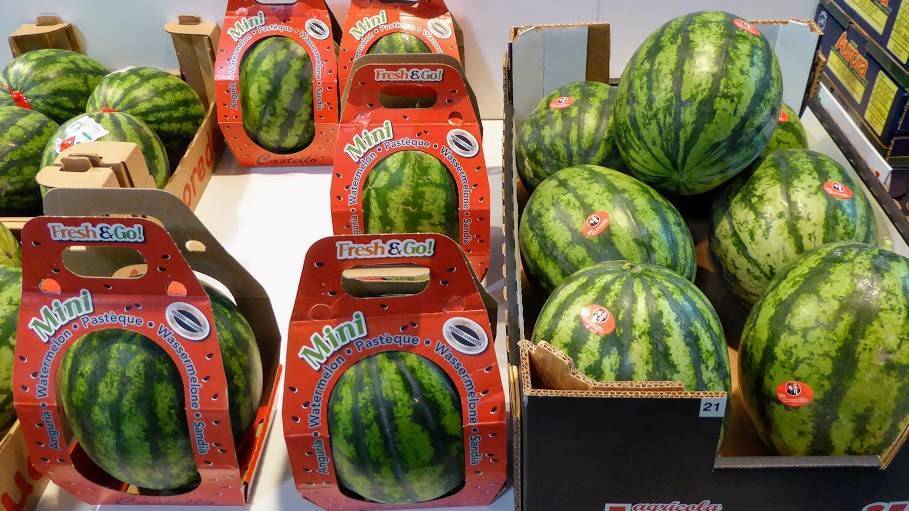May heralds the much-anticipated arrival of early stone fruits, their sweet perfume a sure sign that summer is on its way. These fruits, alongside lingering citrus and the last of the season's berries, create a dazzling display in Spanish markets. The concept of "fruit with pedigree" is particularly relevant here, as many of Spain's prized varieties boast Protected Designation of Origin (PDO) or Protected Geographical Indication (PGI) status. These labels are not mere marketing tools; they represent a proud system of quality control, ensuring that the fruit adheres to specific cultivation practices and possesses taste profiles intrinsically linked to its unique terruño, or terroir. These fruits become culinary ambassadors of their regions.
Stone Fruits Take Centre Stage:
The loquat (níspero) is often the first stone fruit to make its appearance, typically in April or May, effectively "kicking off the countdown to summer". Among the most distinguished are the PDO Callosa d'En Sarriá Loquats from the province of Alicante in the Valencian Community, celebrated for their "very characteristic sweet and slightly acidic taste". Originally from Asia, this oval, orange fruit, which "peels like a banana," has found an ideal home in the Mediterranean climate. Loquats are delightful to eat fresh and versatile in the kitchen. They are featured in desserts like pastry chef Jordi Roca's creation with honey and Mató cheese foam or blended into milkshakes, smoothies, and ice cream. A particularly refreshing use is in a Spring Salad with Loquats and Spinach.

Cherries (cerezas) follow closely, with their season generally running from May to July. The end of spring, particularly mid to late May, brings the highly prized PDO Valle del Jerte cherries from Cáceres, Extremadura. These are renowned for their "sweetness, heart shape, and crisp bite". A unique variety from this region is the picota, which is marketed without a stem as it naturally detaches during harvest. The Valencian Community also boasts the PGI Alicante Mountain Cherries, encompassing over a dozen varieties with diverse shapes, textures, and flavours, cultivated for over a millennium. The culinary world has embraced these gems with enthusiasm.  - Copy 2.jpeg) Top chefs are not limiting these fruits to simple desserts; instead, they are finding innovative ways to incorporate their unique flavours into sophisticated cuisine. For instance, the Torres brothers have famously used cherries in dishes with quail and spices, or transformed picotas into a dessert featuring pepper, almond cream, and sabayon. Chef Kiko Moya showcases PGI Alicante Mountain Cherries in a delicate sorbet paired with tender almonds and royal thyme. More traditional, yet equally delightful, is the French-inspired Clafoutis, often prepared with seasonal Spanish cherries. A more contemporary savoury application is a vibrant cherry chimichurri served with Pluma Ibérica pork.
Top chefs are not limiting these fruits to simple desserts; instead, they are finding innovative ways to incorporate their unique flavours into sophisticated cuisine. For instance, the Torres brothers have famously used cherries in dishes with quail and spices, or transformed picotas into a dessert featuring pepper, almond cream, and sabayon. Chef Kiko Moya showcases PGI Alicante Mountain Cherries in a delicate sorbet paired with tender almonds and royal thyme. More traditional, yet equally delightful, is the French-inspired Clafoutis, often prepared with seasonal Spanish cherries. A more contemporary savoury application is a vibrant cherry chimichurri served with Pluma Ibérica pork.
Apricots (albaricoques) join the ensemble from May through August, although some would say their May harvest depends on a bit of luck. These golden-orange fruits are nutritional powerhouses, packed with vitamins and fibre. They can be enjoyed raw, dried, roasted, preserved, or made into jam. Spanish culinary creativity shines in dishes such as Apricot Sorbet with Saffron Syrup, the hearty Spanish Lamb Stew with Dried Apricots, a refreshing salad featuring caramelised apricots, and roasted apricots macerated in a mojito-inspired blend.
The arrival of early peaches (melocotones) and nectarines (nectarinas), both in season from May to September, truly signals that the main event of summer stone fruits is underway. From Murcia, the Cieza peaches, particularly the Baby Gold 6 (yellower) and Romea (more orange) varieties, are lauded for their "consistent and juicy texture" and perfect equilibrium of acidity and sweetness, often releasing juice from the first bite. Chef María Gómez cleverly utilises the firm texture of Cieza peaches in savoury compositions, such as with aged beef tenderloin and seared foie gras. These early stone fruits, with their juicy flesh and vibrant colours, act as culinary harbingers, building a delicious anticipation for the full splendour of the summer fruit season. Their appearance is an event in itself, a tangible shift in the culinary calendar that excites both consumers and chefs.
Lingering Citrus & Sweet Berries
While many citrus fruits peak in winter, lemons (limón) remain widely available. Though their primary season ends in May, Spain, as the EU's largest lemon producer, ensures a fairly consistent supply. Their bright acidity is indispensable in Spanish kitchens, with the juice and rind lending zest to sauces, marinades, preserves, baked goods, and refreshing drinks.

May also marks the glorious tail end of the strawberry (fresa) season, which typically runs from February. Spain is celebrated for its "extraordinarily regular-sized and large strawberries," with Huelva being a particularly significant production hub. These sweet, ruby-red jewels are a popular export. In Spain, they are often enjoyed in their purest form, perhaps with a dollop of cream in the classic dessert Fresas con Nata. They also feature in a myriad of other desserts and, increasingly, in innovative savoury dishes like Strawberry Gazpacho.
Table: Seasonal Fruits in Spain (May)

The First Melons of the Season
The very first whispers of summer's iconic fruit, the melon, begin in May. Mini watermelons (sandía mini) can appear as early as April or May. Though botanically a fruit, their relation to cucumbers and pumpkins is a curious fact. Cantaloupe melons (melón cantalupo) also start their season in May, extending through September. These early arrivals are cherished for their refreshing sweetness. While often enjoyed sliced, a classic Spanish tapa, Melón con Jamón, beautifully marries the sweet melon with savoury cured ham. Refreshing watermelon salads are also a popular choice as the temperatures begin to climb.

Other Notable Fruits
Medlar (níspero), the European variety, is listed with an April-May season. It is important to distinguish this from the loquat, which, confusingly, is also called níspero in Spanish. The prominent feature in May is the loquat (Asian níspero).
Avocado (aguacate) cultivation in Spain provides several varieties throughout the year. The Reed avocado, however, has a specific season from April/May to August. Other varieties like Bacon, Fuerte, Maluma, Hass, and Lamb Hass also contribute to the year-round availability, each with its unique characteristics. Avocados are a versatile ingredient, forming the base of guacamole and adding creamy richness to salads, sauces, and smoothies.
The flavours of May in Spain are a testament to a rich culinary heritage, a deep respect for nature's rhythms, and an enduring passion for sharing the very best of the season's offerings.